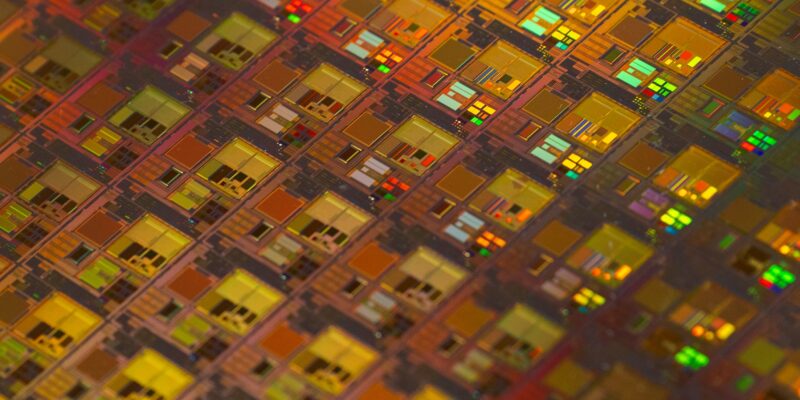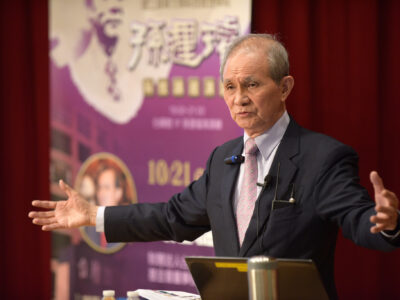Semiconductor Policy Workshop:
Developing a Win-Win Strategy for the United States, Taiwan, and Partners
Hosted by the Stimson Center & the Taipei School of Economics and Political Science Foundation
The Stimson Center and the Taipei School for Economics and Political Science Foundation (TSEF) cohosted the Semiconductor Policy Workshop in September 2023. The theme of the workshop was Developing a Win-Win Strategy for the United States, Taiwan, and Partners. With three panels on Technology, Industry, and Geopolitics, and a final roundtable for all participants, the goal of the workshop was to develop creative policy insights and recommendations on semiconductor policy. The workshop convened experts with backgrounds in semiconductor technologies, economics, and national security, ranging from academic scholars to analysts to policy makers.
Dates: September 15, 2023
Venue: Stimson Center, Washington, DC
Agenda
8:45-9:00 am Arrival
9:00-9:03 am Introduction
Pam Kennedy, Deputy Director, China Program, Stimson
9:03-9:15 am Opening Remarks
Huang-Hsiung Huang, Chairman, TSE Foundation
9:15-10:45 am Technology: Future Paths and Prospects for Semiconductors
Erik Hadland, Director of Semiconductor Technology, Semiconductor Industry Association
Burn Lin, Dean, College of Semiconductor Research, National Tsing-Hua University, Taiwan;Former Vice President of R&D, TSMC
Chintay Shih, Former President, Industrial Technology Research Institute, Taiwan; Morris Chang Chair Professor, National Tsing-Hua University, Taiwan
Moderator: W. John Kao, President, National Tsing-Hua University
Topics
- The future of semiconductor technology. Different scenarios for development in the industry.
- The role and impact of industrial policy in the semiconductor industry. How policy might be used to affect industry challenges.
10:45-11:00 am Break
11:00 am-12:30 pm Industry: Supply Chains, Export Policies, and Taiwan’s Role
Robert Atkinson, President, Information Technology and Innovation
Foundation
Tain-Jy Chen, Professor, Taipei School of Economics and Political Science, National Tsing-Hua University, Taiwan
Lotta Danielsson, Vice President, U.S.-Taiwan Business Council
Ping Wang, Seigle Family Distinguished Professor in Arts and Sciences, Department of Economics, Washington University in St. Louis
Moderator: Riley Walters, Senior Fellow in Global Economy and Technology, Hudson Institute
Topics
- Intended and actual impacts of the U.S. export controls on semiconductor and related industries in the U.S., Taiwan, China and elsewhere.
- Taiwan’s role over time in the semiconductor industry. Prospects for Taiwan’s contributions in the future.
- Responses of companies in semiconductor and related industries to policies. The costs of reconfiguration.
12:30-1:30 pm Lunch
1:30-3:00 pm Security & Geopolitics: Intersection of Economic & National Security
Eric Altbach, Partner, Albright Stonebridge Group
David Bray, Distinguished Fellow & Loomis Council Co-Chair, Stimson
Kevin McGinnis, Special Advisor, America’s Frontier Fund
Chi Su, Former Secretary-General, National Security Council, Taiwan
Michael M. Tsai, Former Minister of National Defense, Taiwan
Moderator: Robert A. Manning, Distinguished Fellow, Reimagining U.S.
Grand Strategy Program, Stimson
Topics
- Managing tensions with China while protecting key industries for national security. The role of high-tech industries in national security.
- Balancing a robust economic security policy with the necessity of international partnerships.
- Lessons learned from the U.S. and Taiwan to share.
3:00-3:15 pm Break
3:15-4:30 pm Roundtable with All Participants
Moderators:
Pam Kennedy, Deputy Director, China Program, Stimson
Hans Tung, Professor, Department of Political Science, National Taiwan University
Ping Wang, Seigle Family Distinguished Professor in Arts and Sciences, Department of Economics, Washington University in St. Louis
4:30-4:50 pm Development of Recommendations
4:50-5:00 pm Closing Remarks
Tain-Jy Chen, Professor, Taipei School of Economics and Political Science, National Tsing-Hua University, Taiwan
董事長開幕致詞
早安,歡迎並感謝大家參與這場有意義的會議,幾天前,我們和哈佛Kennedy school共同舉辦一場semiconductor和geopolitics的會議。這兩場會議,都是來自民間的,學術的,也是獨立自主的,完全與官方無涉。現在我希望利用這個機會,提出一些看法來請教大家。
Distinguished speakers from both Stimson and Taiwan, ladies and gentlemen:
Good morning. Welcome and thank you for joining this significant conference. A few days ago, we also co-sponsored a conference on semiconductors and geopolitics with Harvard Kennedy School. Both the conference at Harvard and at Stimson are entirely self-sponsored, non-governmental and academic. Now, I would like to take this opportunity to share with all the experts and participants here and online, several views of mine on this topic.
1.
從半導體產業成長的歷史觀察,半導體幾乎就代表創新。半導體持續不斷的創新,將半導體產業由早期少數公司掌控,發展為產業鏈上,各有獨領風騷公司的多元局面,從而改變了工業結構,促進了經濟發展,增進了人民福祉。70多年來,半導體為人類帶來的是舒適,方便,進步,和平與全球化,而非戰爭,更與地緣政治無涉。
From the historical perspective of the semiconductor industry, semiconductors have almost exclusively represented innovation. The continuous innovation in semiconductors has transformed the industry from being controlled by a few early companies into a diverse landscape of leading companies along the supply chain. This transformation has altered the industrial structure, fostered economic development, and improved people’s well-being. Over the past 70 years, semiconductors have brought comfort, convenience, progress, peace, and globalization to humanity, rather than wars, and are irrelevant to geopolitics.
2.
臺灣的半導體產業是一個‘unique system’,代表人才、團隊與勤奮的結晶,擁有完整的生態及產業聚落,整個上下游產業鏈,包括美國公司,均同蒙其利,這是多贏的實踐與歷史。也是一種具有巨大經濟效益和特殊產業文化的營運模式,不易移植,更難複製。台灣半導體產業在全球半導體產業鏈上之所以享有地位,實奠基於此,而與地緣政治毫無關係,兩者層次不同,性質不同,也不互為因果。中國是否犯臺與半導體因素無關,事實上,在中國迄今為止的聲明中,從未說過臺灣半導體因素會成為其犯臺的理由之一。
Taiwan’s semiconductor industry is a ‘unique system,’ representing the culmination of talent, teamwork, and hard work. It consists of a complete ecosystem and industrial clusters. The entire upstream and downstream industry chains, American companies included, have all benefited. This is a realization and history of multiple wins. It is also an operational model with significant economic benefits and a distinctive industry culture that is not easily transplanted and even more challenging to replicate. Taiwan’s position in the global semiconductor industry chain is built on this foundation and is completely unrelated to geopolitics. The two are of different levels and nature, and not cause and effect for each other. Whether China invades Taiwan has nothing to do with this semiconductor factor. In fact, among all of China’s statements so far, there has never been any mention that Taiwan’s semiconductor industry would be one of the reasons for the invasion.
3.
源自美國,美國曾長期領導推動的半導體,目前已發展成為一個產業鏈最長,跨越國境最多的產業。當今,沒有任何一個國家,包括美國在內,能夠單獨掌控半導體產業鏈的所有關鍵節點和流程,也沒有任何一個國家,包括美國在內,單獨生產的半導體產品足以滿足全球市場的全部需求。所以,儘管美國仍是晶片設計及製造設備的重鎮,但由於勞動力從製造業轉移到IC設計和各種現代服務業,造成製造業人才短缺現象,加上成本太高,這是美國半導體製造業所面臨的本質與結構問題,美國必須真實面對。
Originating from the United States, the semiconductor industry, which the United States has long led and promoted, has now evolved into an industry with the longest supply chain and the most cross-border operations. Today, no single country, including the United States, can independently control all the key nodes and processes in the semiconductor industry chain, and no single country, including the United States, produces enough semiconductor products to meet the global market’s total demand. While the United States remains a stronghold for the IC design and chip manufacturing equipment, the labor shifts from manufacturing to IC design and various modern service industries resulted in a shortage of manufacturing talent. Moreover, coupled with high costs, this presents a fundamental structural challenge facing the US semiconductor industry. The United States must confront these realities.
4.
長期以來,美國針對半導體產業所採行的政策,可說是自由貿易與全球化的倡議者,實踐者,和受益者。近年來,由於世界權力格局的改變,美國的半導體政策國安色彩愈來愈濃厚,隨著地緣政治的推波助瀾,美國更先後實施出口管制和禁令,這些措施不但殃及全球化帶來的生產力和效率,也損及自由貿易帶來的正面效應。這些都是進行式,導致半導體產業面臨新的賽局。
For a long time, the United States has been an advocate, practitioner, and beneficiary of free trade and globalization in its policies towards the semiconductor industry. In recent years, due to changes in the global power dynamics, the U.S. semiconductor policy has taken on a stronger national security emphasis. Due to the influence of geopolitics, the United States has implemented export controls and bans, which not only impact the productivity and efficiency brought about by globalization but also undermine the positive effects of free trade. These are ongoing developments that have led to a new competitive landscape for the semiconductor industry.
5.
美國為重振在半導體產業的領導地位,急欲填補其一塊缺口,那就是半導體的生產製造,因而力邀TSMC前往美國設廠,TSMC亞利桑那廠(以下簡稱A廠)的設立,代表美國半導體產業一個新的旅程,具有指標意義,但由於建廠成本昂貴,加上美台之間產業文化的落差,TSMC的「A」廠,恐需經過磨合與學習的過程,而無法立竿見影就看到效果。
The United States, in its efforts to regain a leadership position in the semiconductor industry, is eager to fill one specific gap: the semiconductor manufacturing. Therefore, it has strenuously invited TSMC to establish a factory in the United States. The establishment of TSMC’s Arizona facility, referred to as “Fab A,” marks a new journey and milestone for the U.S. semiconductor industry. However, due to the high construction costs and the cultural differences in the industry between the United States and Taiwan, it is expected that TSMC’s “Fab A” may require a period of adjustment and learning before we see immediate effects.
6.
「民主與市場經濟」是20世紀打敗納粹主義與史達林主義的兩大支柱,也是支撐美國立國以來得以既強又富的兩大支持。面對當前的半導體新賽局和TSMC「A」廠的挑戰,如果我們想要迎難而上,引領未來,根本之道,或許是將「民主和市場經濟」這兩大支柱,納入成為我們所應堅持的信念,以及遵循的指導原則。
“Democracy and market economy” were the two pillars that defeated Nazism and Stalinism in the 20th century, and they have been the two mainstays supporting America’s strength and prosperity since its founding. Faced with the new competition in the semiconductor industry and the challenge of TSMC’s “Fab A,” if we wish to overcome the difficulty and lead the future, the fundamental approach may lie in incorporating “democracy and market economy” into our core beliefs and guiding principles that we should adhere to and follow.
我鼓勵所有參與者積極加入討論,這些議題需要持續的關注與共同合作。謝謝。
I encourage all participants to engage actively in the discussions. The issues we tackle here demand ongoing attention and collaboration. Thank you very much.
會議集錦
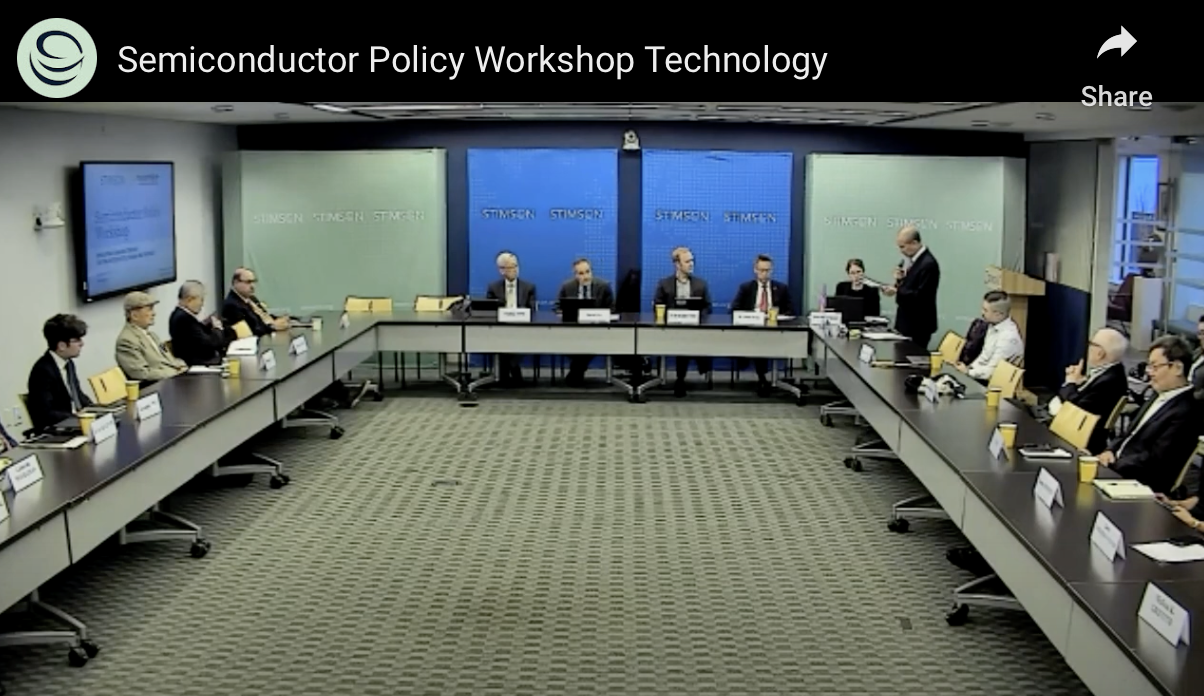
Technology
For decades, progress in semiconductors meant miniaturization in line with Moore’s Law. Today, with the industry’s revenue expected to reach one trillion dollars by the end of the decade, semiconductor technology is moving beyond Moore’s Law with new technological paradigms and different fields of application. Customization of chips is increasingly important, as are the roles of emerging technologies like AI to be incorporated into many aspects of the production process. With the complex, interdependent supply chain stretching across multiple regions, it seems nearly impossible for a single country to orchestrate a self-sufficient semiconductor supply chain. The future of the industry will be based on innovations other than miniaturization, and a key element of this will be ensuring the talent pipeline – from design to manufacturing – is robust. Universities can play a unique role in bringing together private sector needs, public interests, and academic expertise to train students in acquiring creative, technical, and problem-solving skills needed in the semiconductor industry. The U.S. leads in the design area and can use this expertise to retain its leadership in semiconductor technology, whereas Taiwan is the frontrunner in manufacturing.
Yet the importance of semiconductors for national security purposes has raised the concept of “chip war,” with the United States imposing export controls on the industry. This may result in China being forced to find ways around the supply chain that it cannot access, funding more domestic R&D and manufacturing activities, and making tradeoff decisions about when Chinese companies can use mature chip technology in place of the cutting-edge tech in the U.S. supply chain. As an alternative vision to the competitive semiconductor landscape, the concept of “chip peace” should be promoted, focusing on the application of chips to improve standards of living and global economic welfare by emphasizing civilian usage and collaborative applications. Only civilian applications can ensure sufficient production quantity to advance the technology. National security needs can build on these quantity-enabled technological advances by adding necessary features. Unfortunately, looking at semiconductors from a confrontational perspective can create an environment of distrust, in which Taiwan, as home to the majority of the chip manufacturing capacity, is caught in the crossfire. To find a way forward for Taiwan and the U.S., building trust through exchange of views will be an essential part of the policy-making process.


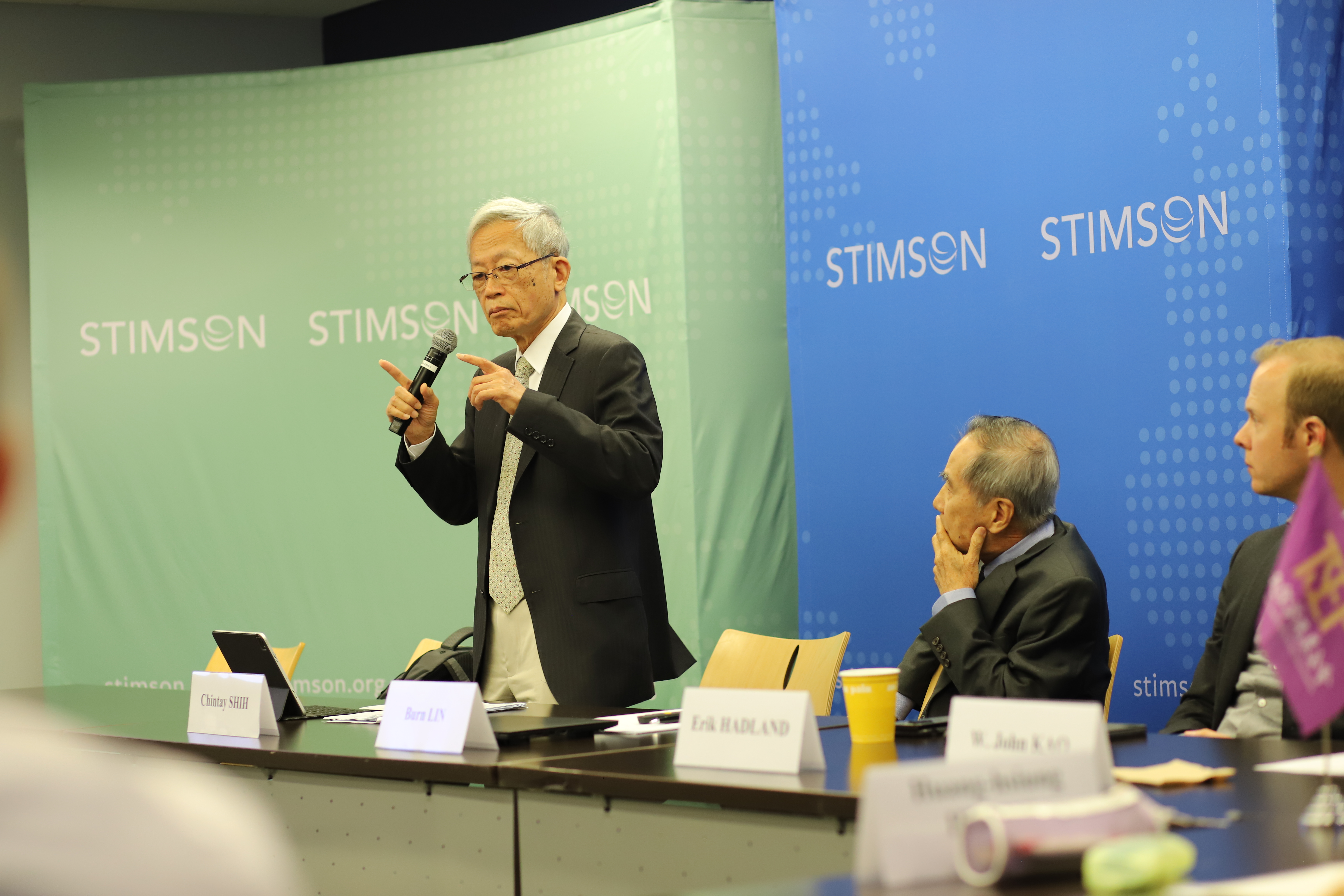
Industry
Over the past few decades, the semiconductor industry has been a central source of innovation and led to the rapid growth of a wide spectrum of industries globally. Taiwan is a key player in this industry under modularization with global sourcing and a highly diversified supply chain. Its success is rooted in a unique ecosystem that integrates many small and medium firms along the supply chain with knowledgeable and experienced skilled labor and well-designed and tested organizational capital. Its significant role is supported by a location quotient of 9, more than double of the runner-up, South Korea. Without the establishment of a full semiconductor ecosystem in the U.S., the TSMC-Arizona plant could become a second Intel, which serves little purpose in enhancing supply chain resilience. The development of the industry exhibits strong U.S.-Taiwan interdependence and yields large mutual gains. Being an indispensable partner to the U.S., Taiwan must be included in the U.S.’s friend-shoring chain, whereas diversification should not be over-emphasized as it may cause a hollowing-out of Taiwan’s signature industry.
Wrongdoing is worse than not doing because of the irreversibility of the sunk damage. Historical data show many failed and wasteful industrial policies. With regards to export controls, one must calculate possible, unintended outcomes including speeding up China’s efforts to catch up, triggering retaliations and causing business losses. With regards to chip subsidies, it is well known that one policy cannot achieve many objectives in a complex, dynamic world. As such, allocating large funds in a limited period of time and targeting manufacturing with mass production that has been abandoned for a long time is likely to lead to suboptimal selections and misuse of capital without significant creation of jobs. Cost hikes due to human capital adjustments and reconfiguration may result in huge efficiency losses and economic instability. This is a loss that would harm the U.S., Taiwan, and the world as a whole. While it is important to ensure national security, economic security should not be compromised.


Security & Geopolitics
Recently, the geopolitical risks have been on the rise across the Taiwan Strait. As the hawkish voices become much more vocal on the mainland side, there are also worrying signs in Taiwan. There is a huge perception gap between the U.S. and Taiwan: While the risk perception of military conflicts across the Taiwan Strait has increased dramatically in the former, that held by most civilians in the latter remains at a low level. Most Taiwanese people would like to enjoy cost-free security and have a high expectation of U.S. involvement if China invades. Taiwan’s armed forces have not been thoroughly trained, and Taiwan’s recent recruitment of military volunteers has not been very successful. On the U.S. side, as the security risk across the Pacific goes up amidst global supply chain adjustments, there are a host of challenges inside the U.S. policymaking processes to make a more balanced policy that addresses both security concerns and economic benefits. The challenge of policy coordination often extends to the international level, where it takes hard work and time to align the interests of different nations. As modern digital technology advances and spreads, it further complicates the current geopolitical landscape.
To tackle these new challenges, multifaceted collaborations at the international level are necessary. Based on various hard facts on the ground, it is better to make Taiwan less contentious in great power competition. To achieve this, more cross-strait dialogues are needed to lower tensions, and, as a last resort, a U.S.-China dialogue to stabilize the situation. Moreover, on the U.S.-Taiwan relations side, a win-win strategy for both parties will need deeper interdependence among allies, the U.S., and Taiwan. First, on supply chain adjustments, as the industry moves from “just-in-time” to “just-in-case,” what has been lacking in the discussion is the funding for friend-shoring, and every country is looking for a way to contribute to this endeavor. It is an opportunity for both the U.S. and Taiwan to help. Second, the U.S. and Taiwan should also collaborate on a new model of education with shorter training cycles, as people need to learn newer and more mobile skills at a much faster pace. Third, on the investment side, to create more interdependence between the U.S. and Taiwan, both parties should also work together to bring more new start-up companies to the semiconductor industry and incentivize them to fill the demand gap in the supply chain.

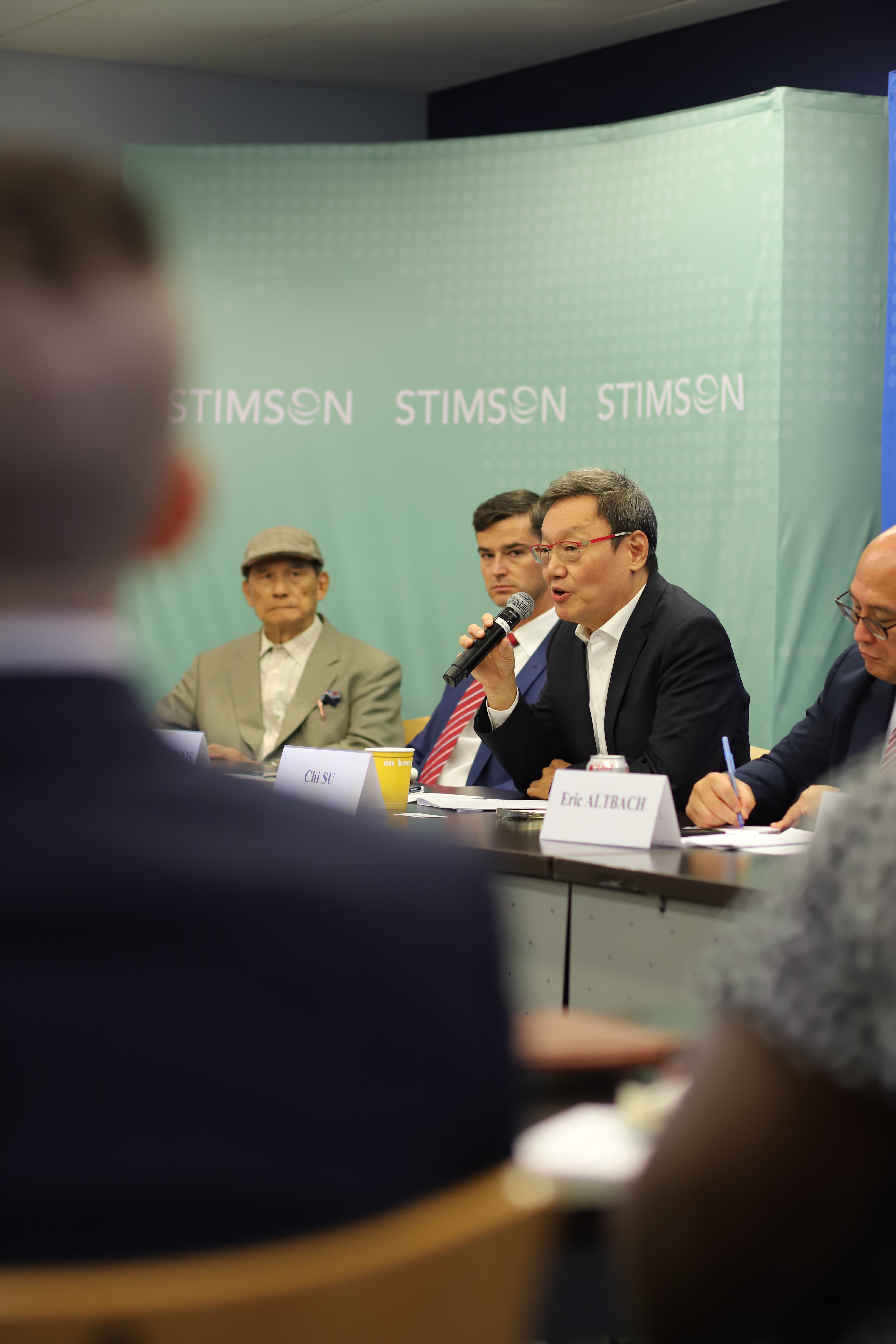

Policy Recommendations
- While it is important to ensure national security, economic security should not be compromised. It should be stressed that the U.S. chip policy is rebalancing rather than establishing self-sufficiency. Thorough evaluation should be made toward better allocating the subsidies and reshaping the global supply chain to reassure both national security and economic security with manageable efficiency losses.
- Taiwan must be included in the U.S. friend-shoring chain, whereas diversification should not be overdone to avoid hollowing out Taiwan’s signature industry. A proactive approach is for the U.S. and Taiwan to work together to ensure chip security and to advance the necessary ingredient of the semiconductor industry – human capital. Investment in the semiconductor industry by nurturing talent and skills in the industry’s people is critical to both future breakthroughs in semiconductor technology and the industry’s current needs.
- To ensure successful outcomes from the joint effort between the U.S. and Taiwan, trust plays a crucial role. Trust can be assured only under the principle of equal footing, mutual benefits, and full communication. The U.S. and Taiwan should expand regular communication on these issues at government, industry, and civil society levels to build trust.

